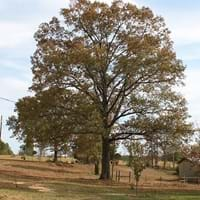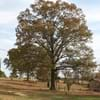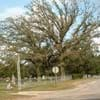Life Span
Perennial
Perennial
Type
Tree
Flowering Plants
Origin
United States, Mid-Atlantic United States, Southeastern United States, Central United States, South-Central United States
Not Available
Types
Not Available
Aconitum napellus
Number of Varieties
Not Available
Habitat
Sandhills
Damp shady woods, meadows
USDA Hardiness Zone
6-9
12-15
Sunset Zone
Not Available
21, 22, 23, 24
Habit
Oval or Rounded
Oval or Rounded
Minimum Height
Not Available
Minimum Width
Not Available
Flower Color
Red, Light Green
Yellow
Flower Color Modifier
Bicolor
Not Available
Fruit Color
Brown, Black
Green
Leaf Color in Spring
Green, Gray Green
Not Available
Leaf Color in Summer
Gray Green, Dark Green
Not Available
Leaf Color in Fall
Gray Green, Dark Green, Tan, Dark Red
Not Available
Leaf Color in Winter
Not Available
Not Available
Leaf Shape
Lobed
Compound
Plant Season
Spring, Summer, Fall
Not Available
Sunlight
Full Sun
Not Available
Growth Rate
Slow
Very Slow
Type of Soil
Clay, Loam, Sand
Not Available
The pH of Soil
Acidic, Neutral
Not Available
Soil Drainage
Well drained
Not Available
Repeat Bloomer
No
Not Available
Tolerances
Pollution
Not Available
Where to Plant?
Ground
Ground
How to Plant?
Seedlings, Stem Planting, Transplanting
reseeds
Plant Maintenance
Medium
Medium
Watering Requirements
Average Water Needs, Do Not over Water, Keep ground moist, Never Over-water, Requires watering in the growing season, Water less during winter
Do not let dry out between waterings
In Summer
Lots of watering
Lots of watering
In Spring
Moderate
Moderate
In Winter
Average Water
Average Water
Soil pH
Acidic, Neutral
Not Available
Soil Type
Clay, Loam, Sand
Not Available
Soil Drainage Capacity
Well drained
Not Available
Sun Exposure
Full Sun
Not Available
Pruning
A hard prune may be necessary if the plant becomes woody, Remove damaged leaves, Remove dead branches, Remove dead leaves
Remove damaged leaves, Remove dead branches, Remove dead leaves
Fertilizers
fertilize in growing season
All-Purpose Liquid Fertilizer
Pests and Diseases
Leaf Blister, Spider mites
Red blotch
Plant Tolerance
Drought, Salt
Drought
Flowers
Insignificant
Not Available
Flower Petal Number
Not Available
Single
Fragrant Flower
No
Not Available
Fragrant Fruit
No
Not Available
Fragrant Leaf
No
Not Available
Fragrant Bark/Stem
No
Not Available
Showy Foliage
Yes
Not Available
Showy Bark
Yes
Not Available
Foliage Texture
Coarse
Bold
Foliage Sheen
Glossy
Not Available
Invasive
No
Not Available
Self-Sowing
Yes
Not Available
Attracts
Birds
Hummingbirds
Allergy
no allergic reactions
poisonous if ingested, Toxic
Aesthetic Uses
Landscape Designing
Not Used For Aesthetic Purpose
Beauty Benefits
Not Available
Not Available
Environmental Uses
Air purification
Air purification
Medicinal Uses
Nutrients
Analgesic, Anodyne, Diaphoretic, Homeopathy, Used as a sedative
Part of Plant Used
Bark, Seeds, Stem, Tree trunks
Root
Other Uses
Economic Purpose, Used in construction
Not Available
Used As Indoor Plant
No
No
Used As Outdoor Plant
Yes
Yes
Garden Design
Feature Plant, Shade Trees
Not Available
Botanical Name
QUERCUS falcata
Aconitum
Common Name
Southern Red Oak
aconite, monkshood, wolf's bane, leopard's bane, mousebane, women's bane, devil's helmet, Queen of all Poisons, blue rocket
In Hindi
दक्षिणी लाल ओक
बच्छनाभ
In German
Südliche Red Oak
Eisenhut
In French
Chêne rouge du Sud
Queen of all Poisons
In Spanish
Roble Rojo meridional
Queen of all Poisons
In Greek
Νότια Red Oak
Queen of all Poisons
In Portuguese
Southern Red Oak
Queen of all Poisons
In Polish
Southern Red Oak
Tojad
In Latin
Quercus falcata
Queen of all Poisons
Phylum
Magnoliophyta
Tracheobionta
Class
Magnoliopsida
Magnoliopsida
Order
Fagales
Ranunculales
Family
Fagaceae
Cactaceae
Clade
Angiosperms, Eudicots, Rosids
Angiosperms, Eudicots
Tribe
Not Available
Delphinieae
Subfamily
Not Available
Not Available
Number of Species
Not Available
Properties of Southern Red Oak and Queen of all Poisons
Wondering what are the properties of Southern Red Oak and Queen of all Poisons? We provide you with everything About Southern Red Oak and Queen of all Poisons. Southern Red Oak doesn't have thorns and Queen of all Poisons doesn't have thorns. Also Southern Red Oak does not have fragrant flowers. Southern Red Oak has allergic reactions like no allergic reactions and Queen of all Poisons has allergic reactions like no allergic reactions. Compare all the properties and characteristics of these two plants. Find out which of these plant can be used as indoor plant. If you are interested to decorate your house and garden, find out aesthetic uses, compare them and select the plant which will beautify your surrounding. Along with beautification, try comparing medicinal and edible uses of Southern Red Oak and Queen of all Poisons and you can choose the plant having best and most benefits.
Season and Care of Southern Red Oak and Queen of all Poisons
Season and care of Southern Red Oak and Queen of all Poisons is important to know. While considering everything about Southern Red Oak and Queen of all Poisons Care, growing season is an essential factor. Southern Red Oak season is Spring, Summer and Fall and Queen of all Poisons season is Spring, Summer and Fall. The type of soil for Southern Red Oak is Clay, Loam, Sand and for Queen of all Poisons is Not Available while the PH of soil for Southern Red Oak is Acidic, Neutral and for Queen of all Poisons is Not Available.
Southern Red Oak and Queen of all Poisons Physical Information
Southern Red Oak and Queen of all Poisons physical information is very important for comparison. Southern Red Oak height is 2,130.00 cm and width 2,130.00 cm whereas Queen of all Poisons height is Not Available and width Not Available. The color specification of Southern Red Oak and Queen of all Poisons are as follows:
Southern Red Oak flower color: Red and Light Green
Southern Red Oak leaf color: Green and Gray Green
Queen of all Poisons flower color: Yellow
- Queen of all Poisons leaf color: Not Available
Care of Southern Red Oak and Queen of all Poisons
Care of Southern Red Oak and Queen of all Poisons include pruning, fertilizers, watering etc. Southern Red Oak pruning is done A hard prune may be necessary if the plant becomes woody, Remove damaged leaves, Remove dead branches and Remove dead leaves and Queen of all Poisons pruning is done Remove damaged leaves, Remove dead branches and Remove dead leaves. In summer Southern Red Oak needs Lots of watering and in winter, it needs Average Water. Whereas, in summer Queen of all Poisons needs Lots of watering and in winter, it needs Average Water.





